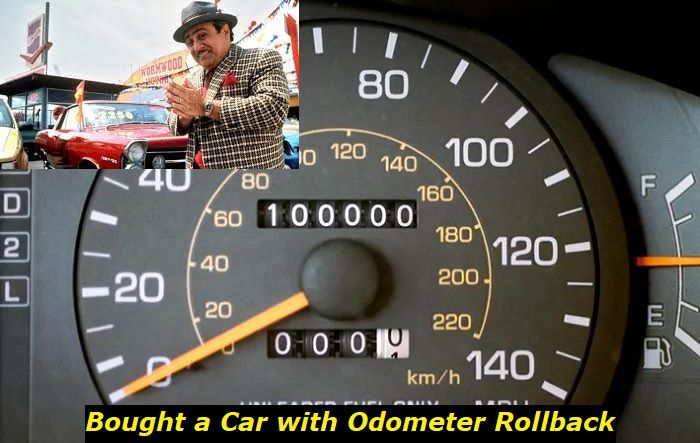The 3.9L V8 engine came into Ford's stable after they acquired Jaguar in 1999 to modernize their outdated fleet with luxury models. The small but feisty engine remained in their rotation even after they sold Jaguar to Tata Motors in 2009.
The AJ-V8 3.9L engine has since been modified and put in the 2002-2006 editions of the iconic Ford Thunderbird line, which has eleven generations (dating back to 1955 when it debuted). You can also find the modified AJ35/AJ30 in the Lincoln LS. Gearheads were quick to appreciate the engines' 286-pound torque and 252 and 280 horsepower for the 2002-2003 and 2003-2005 models.

Key features and my opinion about the engine
- Production years:2004-2007
- Average lifespan of 3.9L V6 Essex:280,000-320,000 miles
- Fuel supply type:port injection
- Power range:190 hp
- Fuel efficiency:bad
- Engine block material:cast-iron
- Engine reliability score:high
- The most common problems:a lot of possible leaks, vibrations, low power.
Your 3.9L V8 Essex Engine is Producing Coughing and Sputtering Sounds
Is your engine suddenly making coughing or sputtering sounds? Chances are high that your ignition coil is not firing correctly. If you notice a vibrating sensation in your car's cabin that may be accompanied by a sudden jerking of your car when accelerating or idling, your ignition coil is most likely to blame.
This problem was so common in the Ford T-Birds from 2002-2005 that the company issued an extended warranty for their ignition coils.
Solution
Contact your local Ford dealership to check whether you qualify for the extended ignition coil warranty. Without the extended warranty, you can expect your ignition coil replacement to cost you between $500 and $640. While this cost may seem steep, ignoring the sounds will cause severe engine damage that will stall your car.
It will also cost you more when you eventually take your car for repair. If you can not afford to fix the car immediately, it is advisable not to drive it in this state.
Your 3.9L V8 Engine is Causing a Burning Smell in the Cabin
Users of the 3.9L V8 engine have complained of engine misfires once the car reaches a mileage of about 80,000. If your engine has been misfiring, the most likely suspect is a broken valve gasket. The most common sign that you are the victim of a broken gasket is a burning smell in your car's cabin.
This unpleasant odor is caused by the leakage of motor oil from the gasket onto your car's hot components. Where the leak is severe, motor oil not eviscerated by the hot engine components could reach your spark plugs and result in the misfiring or rough running of your engine. It is safest to drive your car to an auto repair expert close by as soon as you detect the smell.
Solution
You must replace the broken valve gaskets as soon as you smell the unpleasant burning oil. Failure to address the issue may cause a fire to break out under your hood. A faulty gasket will also cause severe engine damage, costing a pretty penny to repair.
Keeping up with your regular car maintenance schedule is an excellent way to avoid this problem. Your auto repair expert will keep an eye on your engine to ensure that all parts are in optimal condition. The expert will catch potential issues and perform appropriate repairs before they develop into an expensive replacement level.
White Smoke Pouring from Exhaust
This problem is typically reported in 3.9L V8 engines that have racked up mileage of over 100,000. If there is white-blue smoke suddenly coming from your exhaust pipes, the most likely cause is a cracked cylinder head or blown head gasket. The problem could be caused by coolant loss or overheating of your engine.
Solution
Replacing a head gasket will cost you quite a lot. Considering the steep cost, it is best to have a professional diagnose the problem to ensure you do not needlessly purchase an expensive replacement.
Engine Shutdown and Stalling
Owners of the 3.9L V8 engine have reported shutdown and stalling every once in a while. This problem could be due to several potential issues. The most likely cause is low fuel pressure which causes the engine not to receive enough gas from your tank. When your engine does not receive enough fuel, it will likely fail at high speeds.
Engine shutdown and stalling resulting from low fuel pressure could be caused by a fault in several components. These include a dirty/clogged fuel injector, broken fuel pump, faulty mass air flow sensor, or oxygen sensor.
Solution
If your fuel injector is clogged, it must be cleaned and reinstalled in the car. It is also possible to clear a blocked fuel injector by going for a high-speed cruise on the open road to heat up the injector so the oil blocking it heats up.
If your oxygen or mass air flow sensors are faulty, they will fail to optimize the volume of oxygen needed for your 3.9L V8 engine to operate efficiently. Engine stalling and shutdown may also be caused by a clogged catalytic converter which results in the accumulation of exhaust in the car. This accumulation stalls your engine due to increased exhaust pressure.
Overheating
The 3.9L V8 Essex engine has been criticized for overheating of the engine due to the brittleness of its cooling components. Several drivers of the 2003 Thunderbird with an average mileage of 100,000 have reported the cracking of their composite intake manifold near the thermostat housing. This crack causes a coolant leak.
Overheating can also occur due to the failure of the overflow tank. This failure causes excess antifreeze to leak from your radiator cap and cause eventual corrosion of the metal parts. The compromise of the cooling system causes the engine to begin overheating.
Another likely cause of overheating is a coolant leak due to a broken water pump or a damaged radiator hose. This problem is likely to affect you if you regularly spend hours stuck in traffic. When your car is running yet stationary, it is expected to suffer from insufficient airflow into the system.
Solution
Diagnosing the cause of overheating is challenging for drivers who aren't dedicated gearheads. It is advisable to have a professional inspect your engine to pinpoint the source of the problem. An expert will offer you crucial advice on repairing or replacing the faulty part. Ford extended the warranty on the intake manifold for affected models to seven years (from the date of purchase) and released a reinforced manifold that did not have a similar fault.
Where you have to purchase replacement parts, ensure they are sourced from a certified Ford dealership. Non-OEM parts may be cheaper than the original, but they often wear out faster and may cause compatibility issues in your engine.
Timing Chain Failure
Over the natural lifespan of your 3.9L V8 engine, your timing chain may loosen due to normal wear and tear. If your engine is suddenly consuming more gas than usual or failing unexpectedly, the likely culprit is a timing chain failure.
A faulty timing chain will knock your engine's timing and cause numerous problems if ignored.
This loosening of the timing chain results in the chain breaking or jumping a tooth. There is a slight chance that your timing tensioner may also be defective. A faulty tensioner may cause your timing chain to fail before its time.
Solution
The best solution is to purchase an original timing chain kit from a Ford dealership as soon as possible. Car enthusiasts should have no problem taking the old timing chain and installing the new one without professional help.
You could successfully install the chain if you have some basic mechanical knowledge and time to refer to mechanical guides and how-to videos. Drivers who are happier behind the wheel than under the car or hood can opt to leave the installation to the professionals.
Final words
If your trusted Thunderbird or Lincoln LS is suddenly not as reliable as it used to be, you are well advised to act sooner rather than later. Engine issues are best sorted out as soon as you detect them to ensure the problem does not steadily worsen. Your 3.9L V8 engine is a reliable machine that can roaringly push you back into the seat when cared for correctly.
Whatever challenge you face, enacting the prescribed solution is simply the beginning. The best way to ensure your engine never require another expensive repair or replacement is by adhering to your routine maintenance schedule. Paying a professional to check under your hood every month pays off by ensuring your engine does not quit on you.
About the authors
The CarAraC research team is composed of seasoned auto mechanics and automotive industry professionals, including individuals with advanced degrees and certifications in their field. Our team members boast prestigious credentials, reflecting their extensive knowledge and skills. These qualifications include: IMI: Institute of the Motor Industry, ASE-Certified Master Automobile Technicians; Coventry University, Graduate of MA in Automotive Journalism; Politecnico di Torino, Italy, MS Automotive Engineering; Ss. Cyril and Methodius University in Skopje, Mechanical University in Skopje; TOC Automotive College; DHA Suffa University, Department of Mechanical Engineering






Add comment